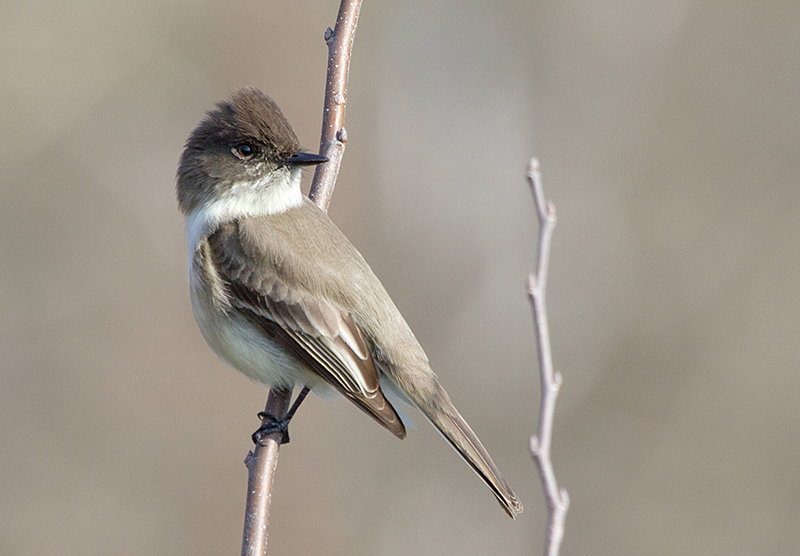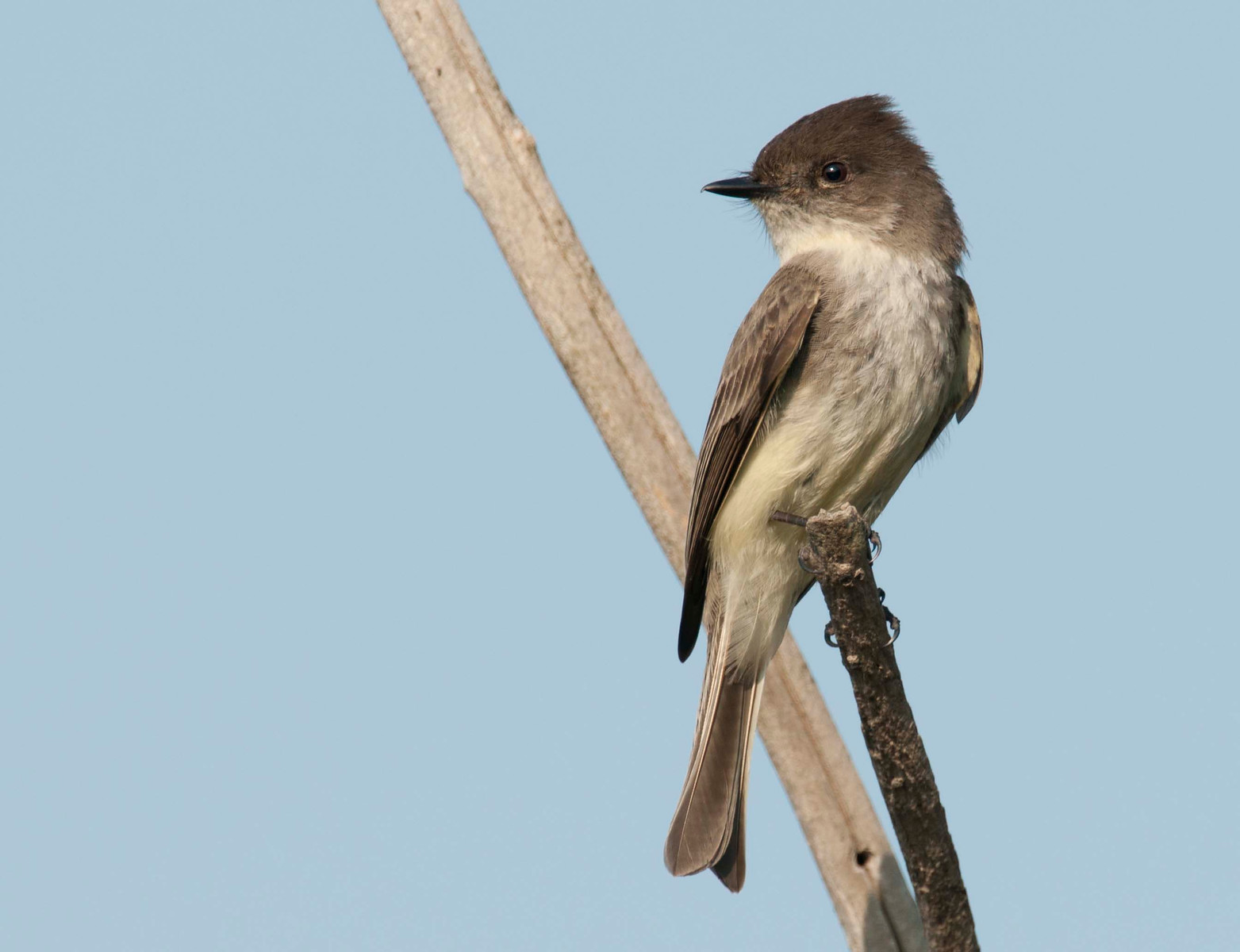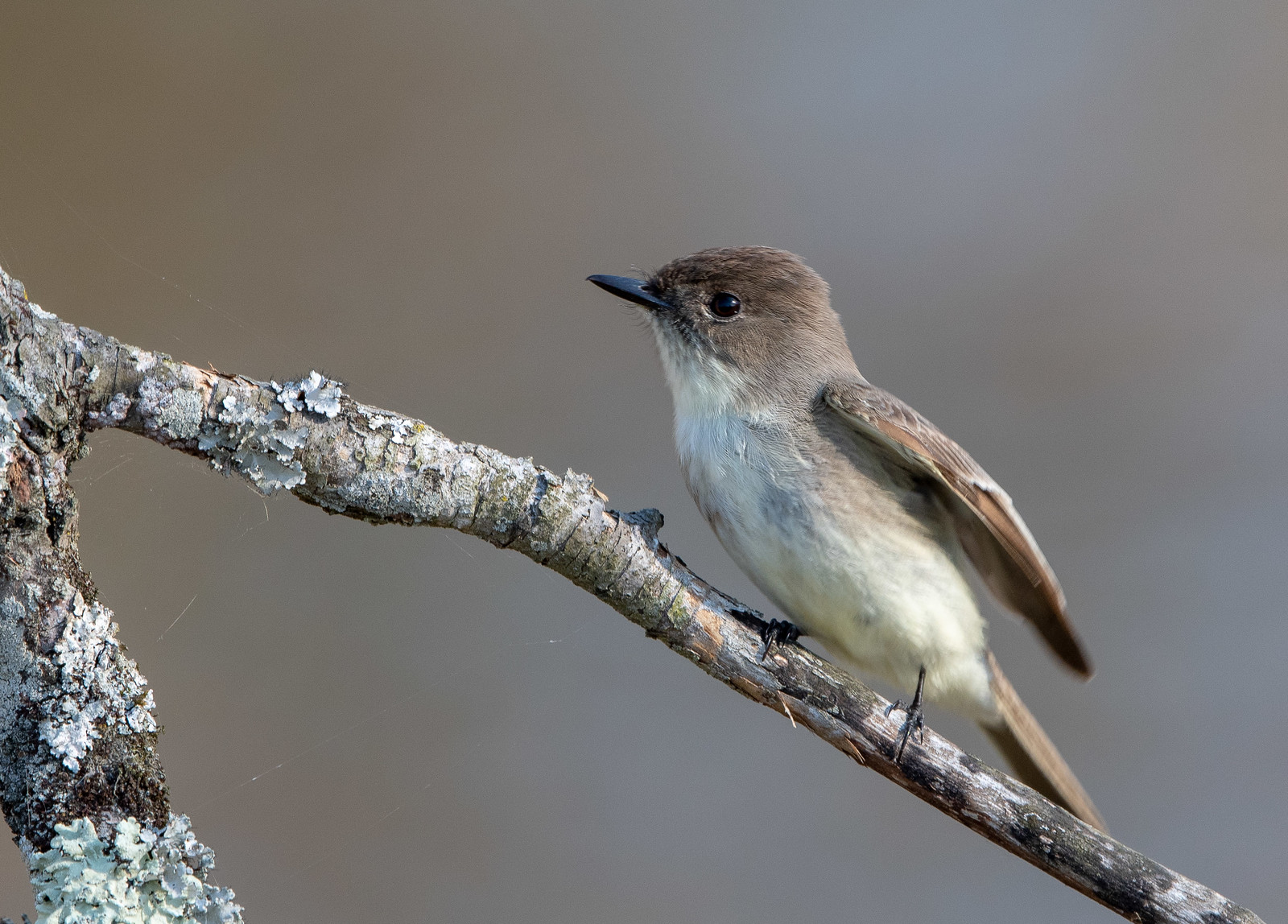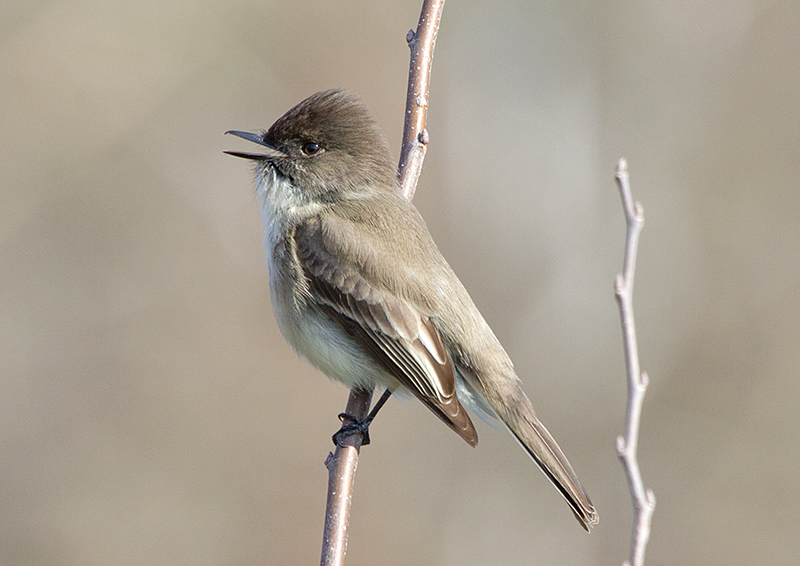| Early Spring Date: | March 1 |
| Late Spring Date: | May 28 |
| Best Dates to See in Spring: | March 11 - April 12 |
Spring: Eastern Phoebes can be seen at Monticello Park at the beginning of March. A small number of phoebes spend the winter in the Washington metro area, while other pass through while migrating north. Some breed in our area, but not at Monticello Park. They often build nests under bridges and on buildings. The best time to look for them at Monticello is during the last week in March.
Fall: Phoebes are one of the earliest migrants in the spring, but they tend to migrate south later than most species. They most commonly pass through Monticello during the last three weeks in October.
Where to See Them in the Park
Phoebes are quite vocal and typically perch on low branches. They can be seen almost anywhere in the park. They are easier to find than most of the other flycatchers, because they usually are in the park before the trees are leafed out.
Physical Description

Phoebes are flycatchers who are dull brown on the back and light underneath. The sexes are similar. They compulsively pump their tail, and this behavior can be a useful identification tool for separating phoebes from other flycatchers.

The feathers on their head often appear to be slightly raised.

Phoebes have a smudge on the side of their breast, and sometimes, there is a lemon wash on the belly.

Phoebes sometimes go to the stream for a quick dip. They typically hit the surface of the water and bounce right back out, tending not to linger.

Fall: Fall adult plumage is similar to spring plumage, but first-fall birds tend to be yellower below. The flicking of the tail is an important behavior to note in all plumages at all times of the year.
Vocalizations

Eastern Phoebes get their name from their song, which they sing in a raspy voice. The name is spelled the same as the name of the Titan from Greek mythology, who was the daughter of Gaia, the Earth goddess. The Titan Phoebe has no connection with the bird.
Hear the vocalizations of the Eastern Phoebe.Notes
Bird banding involves capturing birds, recording information about their physical characteristics, and putting numbered or colored aluminum bands around their leg. For migratory birds, the bands can allow researchers to determine if a recaptured bird might be the same individual who was banded in a previous year or season. In North America, the first person known to experiment with migratory bird banding was John James Audubon. In the early 1800s, he tied a thread to the leg of an Eastern Phoebe to determine if the same bird would come back to his property the following year, and it did.
Origin of Names
Common Names: Eastern from its range. Phoebe from its call.
Genus Name: Sayornis means Say's bird, after American entomologist Thomas Say.
Species Name: Phoebe from its call.
Eastern Phoebe video footage
Return to the Index
